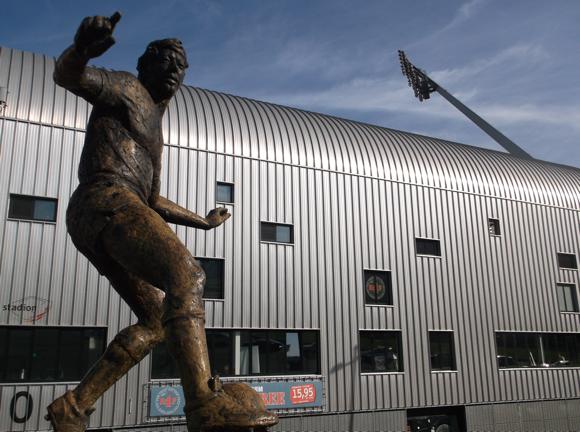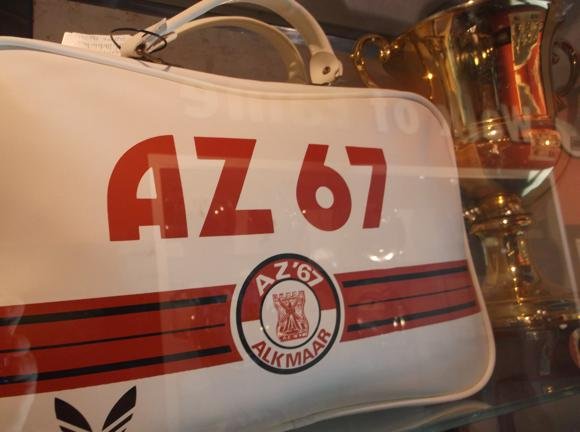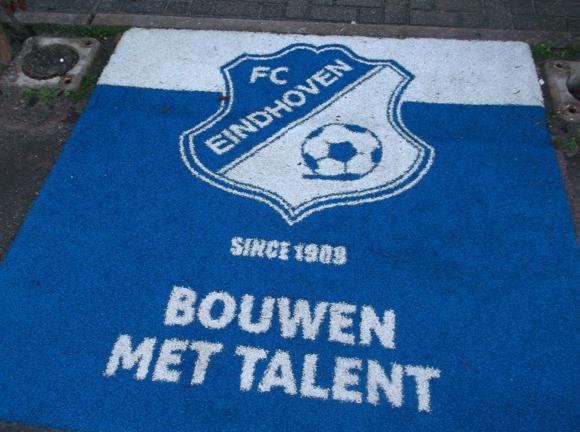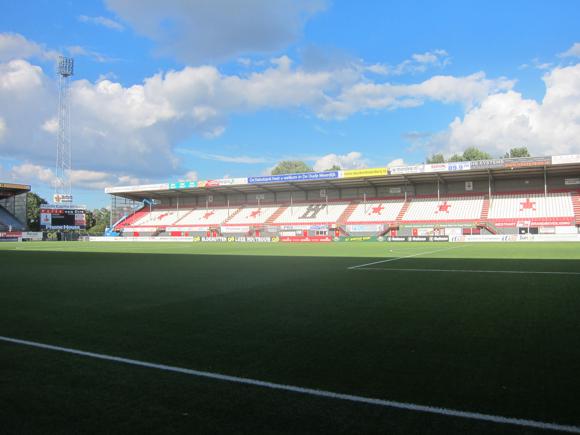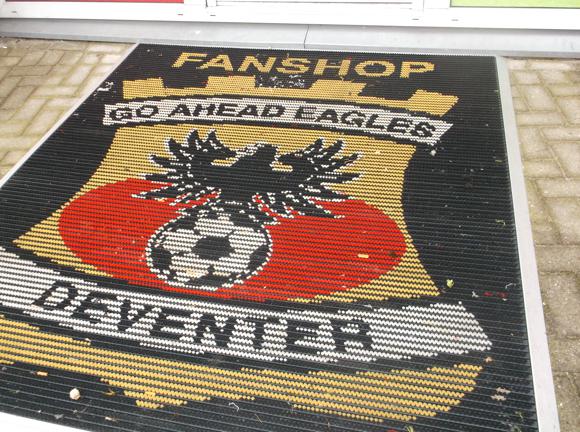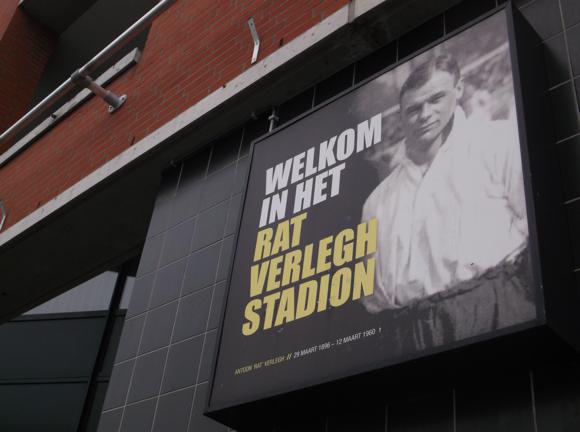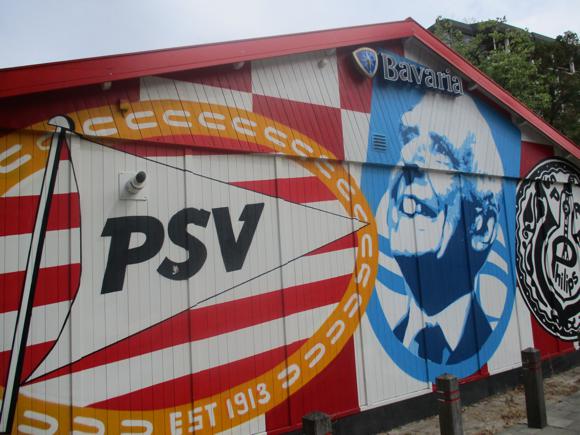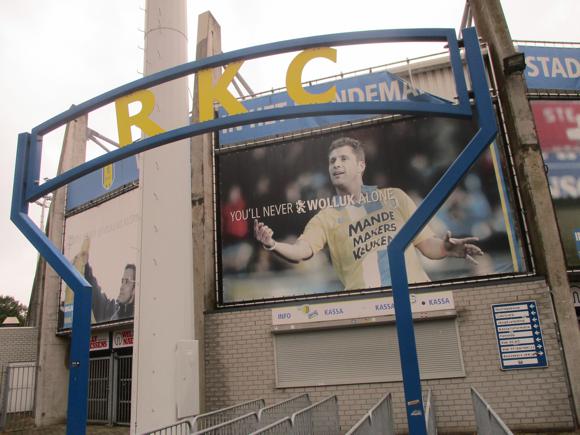A fan’s guide – the club from early doors to today
Dutch Cup winners in 2015, FC Groningen are the Pride of the North, based at a new-build stadium that forms part of an entertainment, retail and hotel complex.
Today’s club, wearing the city colours of green and white, sprang from GVAV, formed as Unitas in 1915. British military internees had a significant impact on how the game developed here, far from the football hubs of Amsterdam, Rotterdam and The Hague. Be Quick, local rivals of GVAV, became national champions in 1920, shortly after clubs from the northern provinces were allowed to compete in the annual play-offs.
Moving from the Stadspark to the newly built Stadion Oosterpark in the early 1930s, GVAV slowly surpassed their venerable neighbours. Never shy about wanting to progress, the Oosterpark outfit embraced the end of the amateur era in 1954.
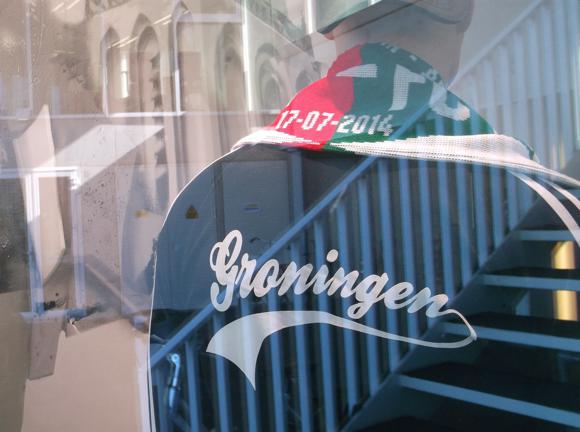
Now the only professional club in Groningen, GVAV soon ran into difficulties, as many across Holland did. Surviving relegation from the top flight in 1958 but not 1970, and the club reformed as FC Groningen a year later.
Baled out by the city council again later that same decade, Groningen sprang to life under coach Theo Verlangen, who brought the prolific Peter Houtman over from Feyenoord where Verlangen had been assistant coach.
Returning to the Eredivisie in 1980, Groningen attracted five-figure crowds to the Stadion Oosterpark and reached a record fifth place in 1983. Erwin Koeman, who had made his debut in the green-and-white of Groningen, was now back with the club and fellow international Adri van Tiggelen would soon arrive from Sparta Rotterdam as Erwin’s brother Ronald left the Stadion Oosterpark for Ajax. Up front, former Hull striker Rob McDonald was scoring a goal every other game in a Groningen shirt.
Incoming coach Han Berger took over for the club’s surprising European debut, first beating Atlético Madrid 3-0 then Internazionale 2-0. Two late goals in Italy then sent Inter through.
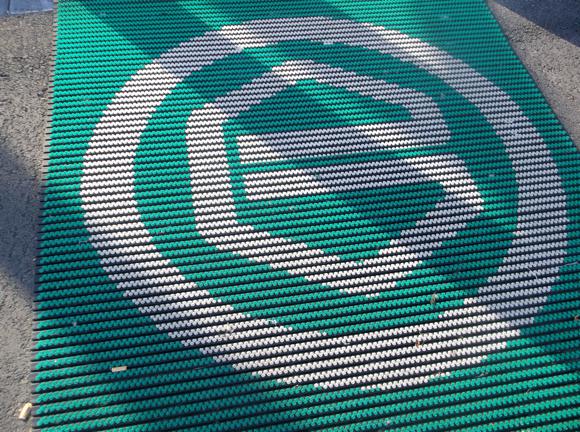
Groningen stayed in the top half of the table for most of the 1980s, overcoming Atlético Madrid again in 1988, this time with Hans Westerhof in charge. A year later, an entertaining European clash at the Oosterpark with Partizan Belgrade saw seven goals at either end, an opening strike from Groningen’s Henny Meijer and two in reply from fiery Milko Djurovski. Westerhof signed up the Yugoslav international, paired the two strikers and soon the green-and-whites put in a first real title challenge, eventually fading away to third in 1991.
Mediocre league form and crowd trouble plagued the subsequent decade before two locally born teenagers broke into the first team from the club’s academy. One, a swift, idiosyncratic winger, was Arjen Robben, whose sensational two years at the Stadion Oosterpark signalled a move to PSV. The other academy starlet, midfielder Jordi Hoogstrate, then followed him to Eindhoven. Robben would go on to become a world star at Chelsea and Bayern – Hoogstrate would only play five more games of top-flight football before a knee injury ended his career.
The late 1990s saw a growing rivalry with improving Heerenveen, a Groningen-Friesland clash now referred to as the Derby of the North. Groningen’s generally negative reputation for fan trouble contrasted with the family-friendly image of their regional neighbours.

This began to change with the move from the old-school Osterpark to the new-build Euroborg in early 2006. Part of a complex that included a cinema, a college and a casino, it’s one of Holland’s new generation of stadiums, easier to police and suitable for a day out with the kids.
These local families had an attractive team to watch, under former FCG striker Ron Jans, as well as a bright young player in Luis Suárez. Discovered by Groningen scouts in Montevideo, the teenage Uruguayan made the Euroborg his first European move, playing a handful of matches before being sold to Ajax for nearly ten times his original fee.
With goals from Norwegian international Erik Nevland and, later, Slovenian cap Tim Matavž, Groningen remained in the higher echelons of the Eredivisie though they lacked a killer touch in Europe. Jans left for, all of teams, Heerenveen, replaced by ex-FCG (and Rangers) winger Peter Huistra, whose side missed out on a European place in a penalty shoot-out with Den Haag.
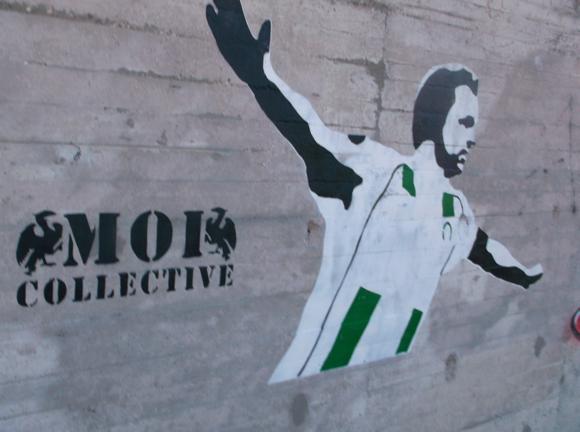
Under former Groningen centre-back Erwin van de Looi, the club at last returned to Europe in 2014 but were quickly dumped out by Aberdeen. Later that season, van de Looi’s side reached the final of the Dutch Cup, coming up against the PEC Zwolle of Ron Jans. In a fiery atmosphere at Feyenoord’s De Kuip, Slovak midfielder Albert Rusnák scored two goals in quick succession to bring the first major silverware to Groningen.
Entering the group stage of the Europa League, FCG were outclassed by Marseille and scored only one goal in four games against Braga and Liberec.
Further European qualification under old boy Danny Buijs became increasingly unlikely.




Stadium Guide
The field of dreams – and the stands around it
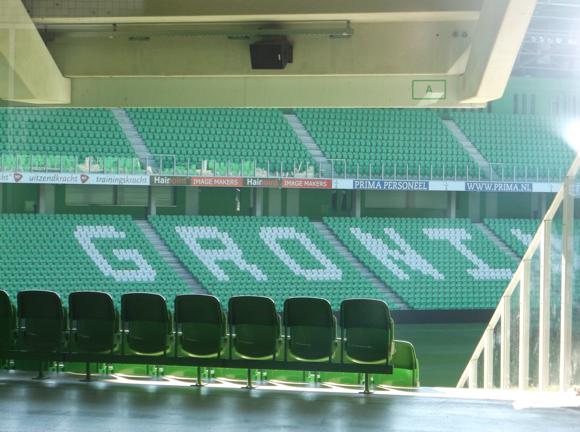
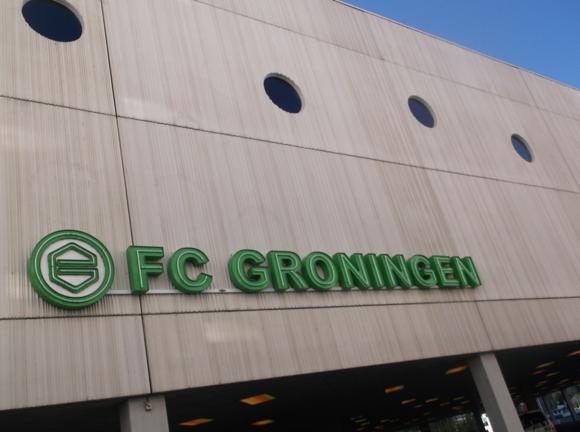

The €45.5 million Euroborg, currently operating under the sponsored name of the Hitachi Capital Mobility Stadion, has been FC Groningen’s home since early 2006. As well as taking the club away from the old-school Oosterpark, it helped change the social dynamic of football-watching here – crowds are easier controlled, families are encouraged to attend.
With an overall capacity of 22,550 – attendances are 20,000-plus – four two-tiered stands are ranged close to the pitch. The home end, sectors A/AA-H/HH, the Tonny van Leeuwen Tribune, is named after the goalkeeper who died in a car crash in 1971, shortly after being named Holland’s best for that season, and one day before the club officially became FC Groningen after decades as GVAV. His statue stands outside.

Visiting supporters are allocated the upper tier, sectors OO, PP and QQ, the corner where the Piet Fransen Tribune meets the Koeman Tribune. Away fans can be shepherded from the station to the entrance through gate 3, over a separate pedestrian walkway – half the stadium is surrounded by narrow waterways.
Behind the main stand, Hoofdtribune, are the bars, lounges and eateries of the Horeca complex, and a multiplex cinema.
getting there
Going to the stadium – tips and timings


The Euroborg is just across from the purpose-built Groningen Europapark rail station. Trains leave frequently from Groningen main station, 1 stop/3min away, €2.20 with chipkaart.
There are buses too, route 5 every 10-15mins from the main square of Grote Markt (€1.50 with a chipkaart), journey time 20mins.
getting in
Buying tickets – when, where, how and how much
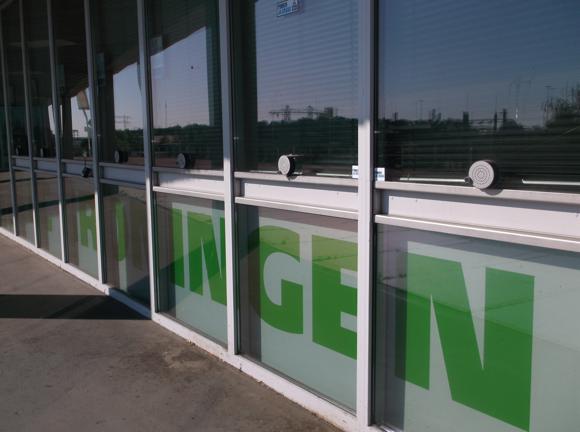
First things first. You don’t need a ClubCard (€5) for most FC Groningen games although it does give you priority when tickets are first distributed, the season’s home games divided into two halves. General sale starts a few weeks before the match, online and in person, first at the FanCorner Groningen (Mon-Fri 10am-5.30pm, Sat 10am-5pm) where the main stand meets the Tonny van Leeuwen Tribune. Nearer to match day, tickets are also sold at outlets of convenience store Primera. The closest to the city centre is at Nieuwe Ebbingestraat 2 (Mon 1pm-6pm, Tue-Wed & Fri 8.15am-6pm, Thur 8.15am-8.30pm, Sat 9am-5pm), a short walk north of the NH Hotel de Ville.
Availability willing, match-day sales take place from 30 minutes before kick-off at the ticket windows in front of the main stand. With average gates close to stadium capacity, try online first. Purchases are possible with a credit card issued by a non-Dutch bank – in fact, the club encourages you, in English, to do this – but the whole obligatory registration process is in Dutch, and now requires a 24-digit barcode. You can email the club at info@fcgroningen.nl or call on +31 50 5 87 87 87 – it’s a standard Dutch landline.
You’ll pay €18 for a seat in the corners (sectors A and X) and behind the goals, €25 down the sidelines and €29 for the best seats in sectors L and M. Children under 15 receive a €5 reduction if you purchase online or from the FanCorner. Prices increase by €4 for games with Heerenveen, Ajax, Feyenoord and PSV.
what to buy
Shirts, kits, merchandise and gifts
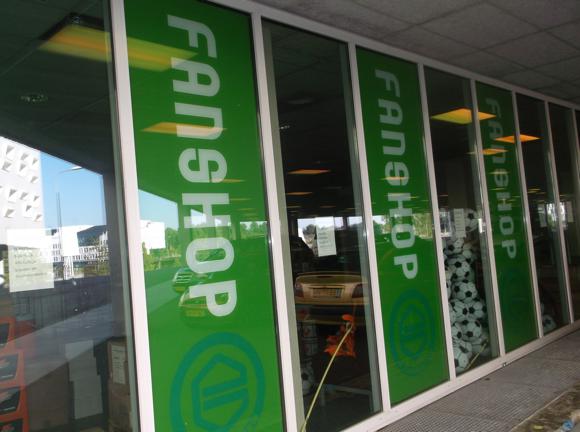



All thing green and white, including baseball caps, cushions, windscreen scrapers, frilly pennants, footballs, coffee mugs and classic Dutch klaxons, are stocked in the FanCorner (Mon-Fri 10am-5.30pm, Sat 10am-5pm, 90mins before kick-off, 1hr after final whistle) by the main stand and Tonny van Leeuwen Tribune.
Where to Drink
Pre-match beers for fans and casual visitors

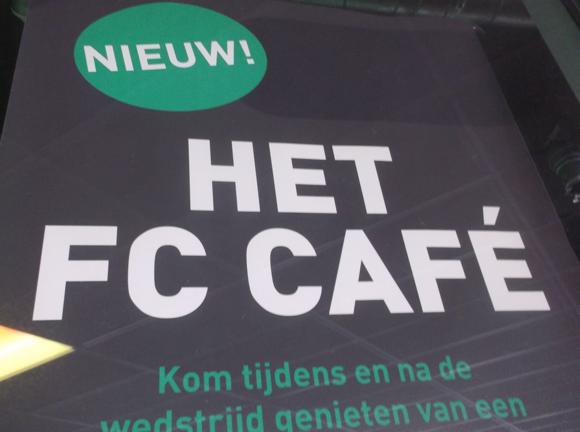
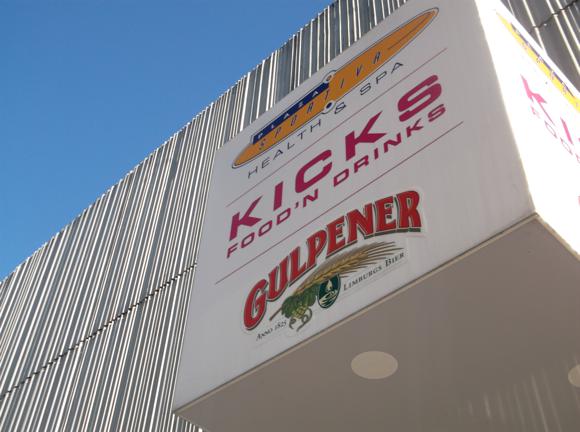
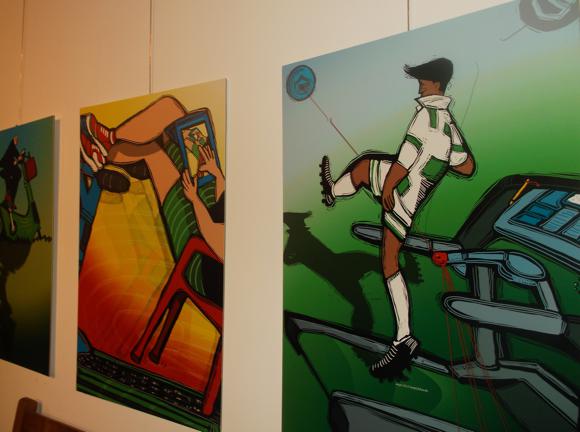
The Euroborg is part of the Europapark leisure complex out of the city centre – you won’t find any classic age-old bar on a street corner.
Stadium outlets are gathered at the FC Groningen Horeca close to the Fan Corner. As long as you’re not an away fan, the most suitable venue is the Hattrick’s Pub, a neat, open-planned bar/lounge of shiny wood and logo’d tabletops, lined with framed black-and-white photos of FC Groningen action. It is complemented by the Hattrick’s Lounge in similar style, with pitch views for corporate clients and those on hospitality packages. It connects with the FC Groningen Wine & Dine, corporate and hospitality again.
For visiting supporters, there’s little nearby choice. The Wok Asian restaurant closed in 2018, and the Fair Play Casino serves soft drinks to over-18s only. Opposite, the outlet at the Plaza Sportiva gym contains the Laifood pan-Asian eatery.


